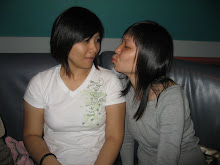Authors: David A. Aaker & J. Gary Shansby (May-June1982)
Article: Business Horizons, Vol. 25, Issue 3, Page 56-62
Review and Comments
“Positioning decision” is defined by David A. Aaker and J. Gary Shansby (1982) as “selecting those associations which are to built upon and emphasized” (pg. 56). This decision is very important because it related to customers’ perception and their choice decision on company or product brand.
In this article, David A. Aaker et al. (1982) discussed six (6) types of positioning strategies.
1. Positioning by attribute
“….is associating a product with an attribute, a product feature, or customer benefit” (David A. Aaker et al., 1982, pg.57). An example is given in this article, BMW focused on handling and engineering efficiency and therefore position itself as “the ultimate driving machine”. However, positioning strategy that emphasized on too many attributes will create a blur and confused image.
2. Positioning by price/quality
This approach is the most common and useful positioning strategy. However, David A. Aaker et al. (1982) felt that they should be used separately. This is because mostly of the customer think that product which has higher quality would not offer in lower price.
3. Positioning with respect to use or application
“….is associating the product with a use or application” (David A. Aaker et al., 1982, pg.57). It positioned as when and why we should use that particular product. The example given by authors is “Quaker Oats has attempted to position a breakfast food product as a natural whole-grain ingredient for recipes” (David A. Aaker et al., 1982, pg.57).
4. Positioning by product user
“….is associating a product with a user or a class of users” (David A. Aaker et al., 1982, pg.57). So, many cosmetic companies use a model to position their product. In context of Malaysia, SK II is one of the example.
5. Positioning with respect to a product class
This strategy is to differentiate our product from the present product-class in market. For example, some margarines position themselves with respect to butter.
6. Positioning with respect to a competitor
By utilize the prominent competitor, it’s easier for us to communicate with the public. For instance, it is easier to position our company by saying, it is next to Jaya Jusco rather than we mention the detail of the location, the street.
Besides these six approaches of positioning strategies, the process of developing a positioning strategy is also very important. Thus, there are six (6) steps in this process.
1. Identify the competitors
We can do this by determine which brand that our target market consider. In short, let our target market tells you who is our competitor instead of researching ourselves.
2. Determine how the competitors are perceived and evaluated
This is to determine the product attributes product group users and use contexts by target market.
3. Determine the competitors’ positions
This is to identify how competitors are positioned with respect to the product association.
4. Analyzing the customer
“A basic understanding of the customer and how the market is segmented will help in selecting a positioning strategy” (David A. Aaker et al., 1982, pg.59). Again, benefit segmentation as I mentioned earlier in my first journal review, is consider as important. Benefit segmentation emphasize on the product’s benefit that customer perceived it as important. For example as mentioned by the authors, toothpaste could be divided into decay preventative segment, fresh breath segment, price segment and etc.
5. Making the positioning decision
This step is crucial to avoid from being something that we are not as this will spoilt the whole positioning process.
6. Monitoring the position
Monitoring is to evaluate the successfulness of the present positioning strategy and also to generate information for future positioning decision.
To conclude, positioning needs to consider on our target market, product attributes, our competitors and so on. Different product also needs different positioning strategy.

